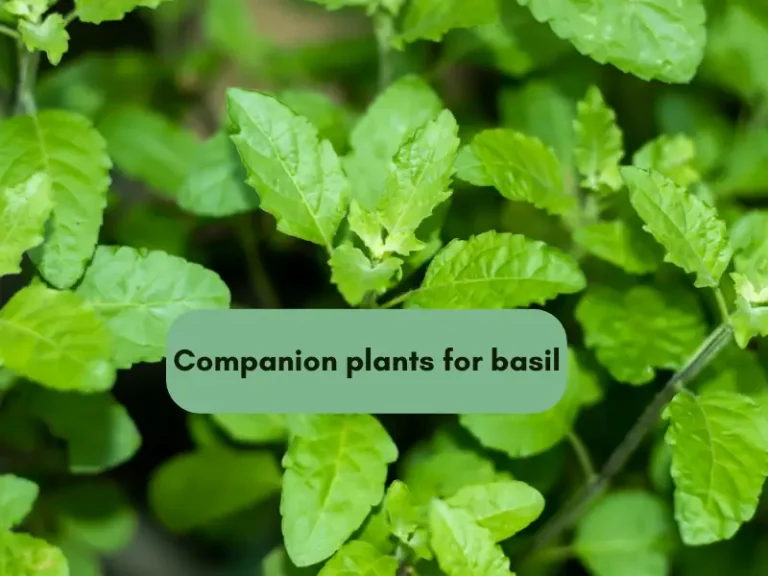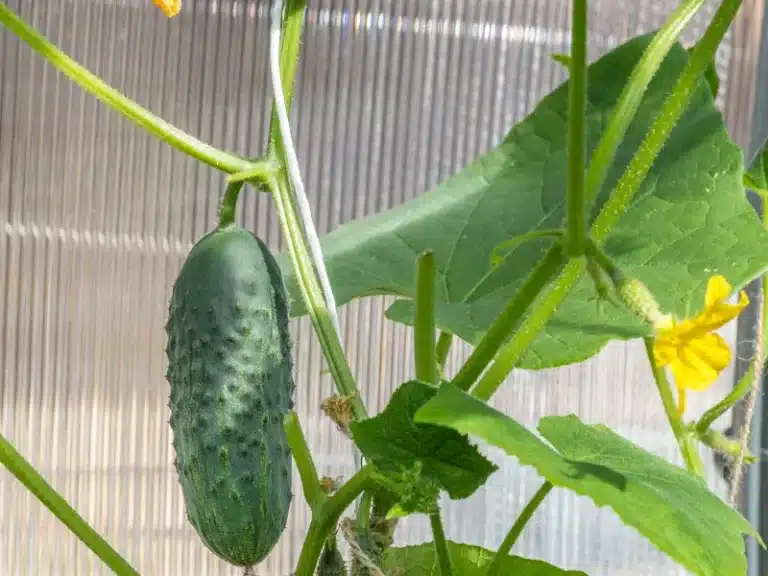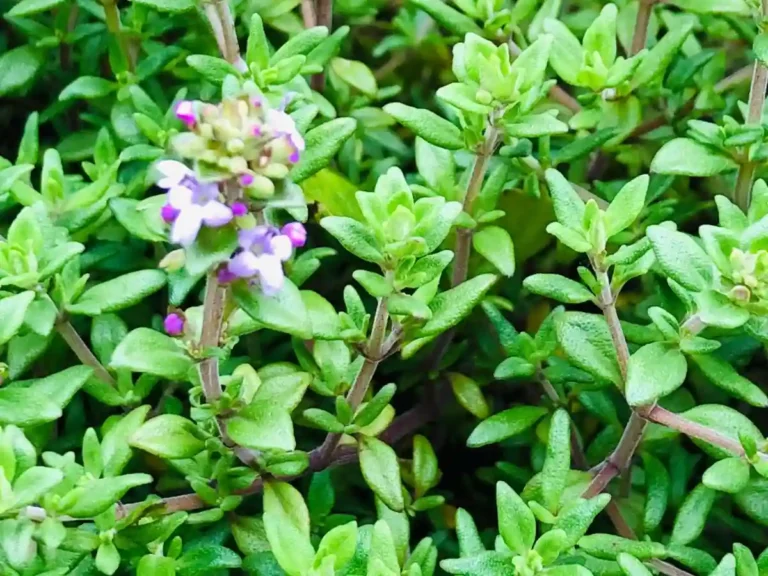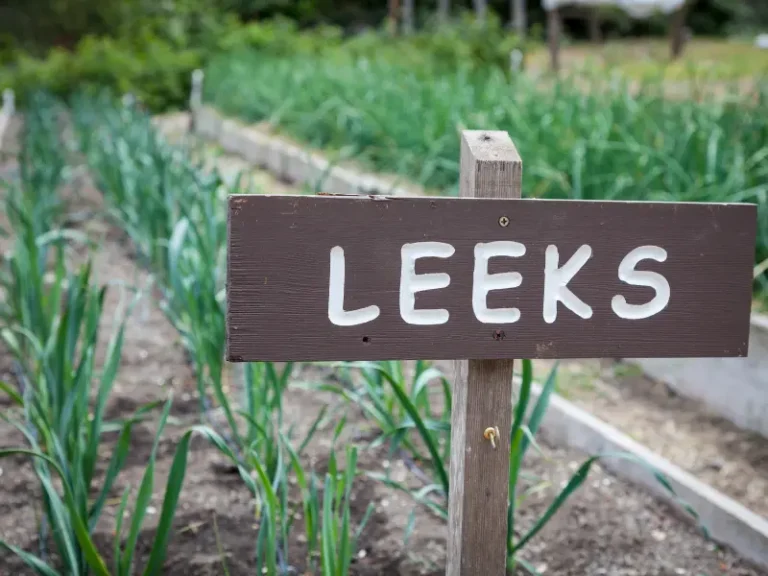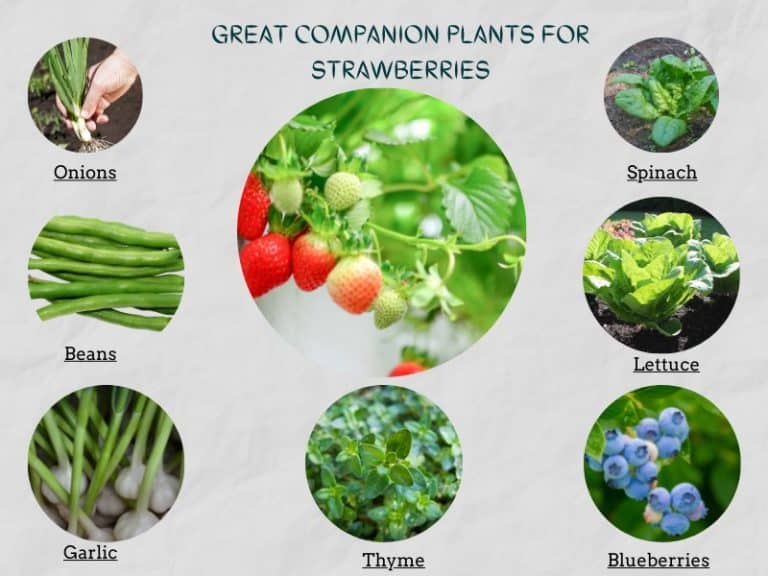Companion Planting Zinnia – 9 Good and Bad Pairs
I like growing zinnia because it is one of the best ornamental plants for flowering gardens. It is also useful enough to be paired with other garden plants, including vegetables, shrubs, and fruit trees.
We mainly add zinnias in our USDA Zone 2-11 gardens to attract pollinators such as bees, hoverflies, and butterflies. These showy plants also attract birds, adding great biodiversity to your backyard. We also plant zinnias to lure pests like aphids, whiteflies, and beetles away from vulnerable species such as salad leaves and beans.

Key takeaway:
Zinnias pair well with marigolds, nasturtiums, salvia, geraniums, dahlia, and cosmos in the garden, as these bring out the bold colors of the zinnias. However, avoid interplanting zinnias with beans, tomatoes, and potatoes, as they can attract aphids, which may damage these crops.
Plants to Pair with Zinnia
Zinnias look much better when paired with cheerful annuals and perennials that match the vibrancy of their blooms. They’re the ones I note down first when starting a pollinator garden next to a crop establishment that needs proper pollination for better yields.
Tomatoes
Not only do tomatoes and zinnias have similar growing conditions, but they can also benefit from each other when planted together.
Both prefer warm weather and intense sunlight, and their seeds germinate into seedlings quickly under such conditions. Zinnia seeds sprout in 3-7 days, while tomato seeds take 5-10 days.
Zinnias bloom early in the season, which means they’ll attract pollinators to your garden for the early ripening of tomatoes for harvest. I use the same pairing when I want a bumper harvest of eggplant, cucumbers, and squash.
We’ve noticed a decrease in tomato worms and cucumber beetle populations whenever we plant zinnias nearby.
The colorful zinnia blooms also attract bees and butterflies into the garden, resulting in improved pollination of tomatoes.
Remember, adequate pollination is essential if you want to realize a bumper tomato harvest.
In summary, zinnia’s showy blossoms attract pollinators and beneficial insects like hoverflies, lacewings, and ladybugs. These predator insects prey on common tomato pests such as tomato hornworms.
Purple fountain grass
The purple fountain grass is a great companion plant for zinnia because they’re both drought-hardy and heat-tolerant. This plant pair makes for a low-maintenance garden, especially during the hot summer months.
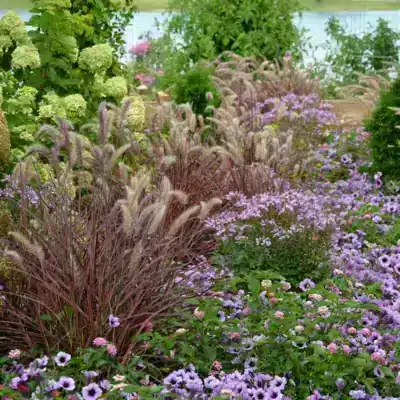
You can also inter-plant zinnia with purple fountain grass purely for aesthetic reasons.
The diverse shapes of the zinnia blooms add structure to the garden, while the arched plumes on purple fountain grass add a graceful touch.
The red/burgundy plumes of purple fountain grass contrast beautifully with Zinnia’s white, red, orange, and purple flowers.
You can harvest these blooms from mid-summer and mix them accordingly for your interior décor.
Note: Purple fountain grass doesn’t bloom as vigorously as zinnia.
Cucumbers
Another good companion plant for zinnia is cucumber. Honeybees and bumblebees are the most effective pollinators for cucumbers. The vibrant zinnia flowers invite these pollinator insects, improving the pollination rate and the cucumber yield.
Cucumbers are also vulnerable to whiteflies, aphids, and thrips. You can keep these pesky pests off your cucumbers by inter-planting with zinnia, attracting beneficial insects like lacewings and ladybugs to feed on the pests.
When pairing cucumbers with zinnias, there are a couple of factors you need to consider:
- Cucumbers are climbing plants whose tendrils will cling around the zinnia stems to grow taller. Unfortunately, zinnia stems aren’t strong enough to support the cucumber vines and will suffer from constriction. I recommend using trellises to support and prevent your cucumbers from vining around your zinnias.
- Cucumbers aren’t as attractive to insect pollinators as other vegetables due to their flower structure. Therefore, when pairing them with zinnias to boost pollination, ensure there are no other vegetable plants nearby to reduce the competition for pollinators.
Learn more about plants to pair with cucumbers.
Peppers
Pepper plants, including black pepper, bell pepper, and piquillo, are all sun-loving plants, just like zinnias. Grow peppers and zinnias in the spring for a flowery garden by summer.
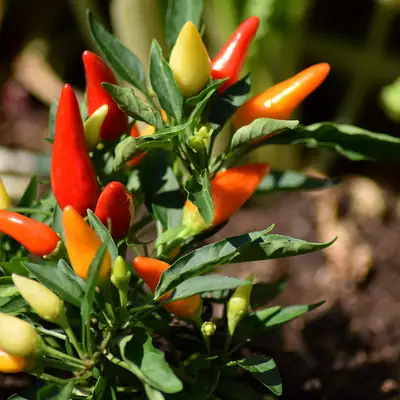
The combination of flower colors will attract pollinator insects, leading to a substantial pepper harvest.
When growing peppers alongside zinnias, take note of the zinnia plant sizes. For tall zinnia varieties, plant them at the border so that they don’t shade the sun-loving pepper plants.
I prefer companion planting peppers with low-growing zinnia varieties that don’t exceed 12 inches at maturity. Such include Profusion Orange, Crystal White, Chippendale, and Lilliput.
Note: Zinnias and peppers grow well even when planted in the same pot/container. Learn more plants to pair with pepper.
Cosmos
Zinnias and cosmos form an excellent companion plant pair because they’re both ‘cut and come back’ plants. These are plants that rebloom quickly whenever the flowers are picked. If you’re keen on harvesting flowers for your bouquets, this plant pair won’t disappoint.
Both zinnia and cosmos also bloom vigorously, so you’ll have an abundant, self-replenishing supply of beautiful blooms for your interior décor needs.
Cosmos and zinnia also share the same growing requirements. These low-maintenance plants grow best when planted in the spring when the soil is warm. They’re also drought-hardy once established and prefer full sunlight exposure and well-drained soil conditions.
Zinnias are vulnerable to whiteflies, aphids, and spider mites during the hot summer months. You can, therefore, pair them with cosmos as a trap crop if the zinnias are of more value to you. The pests will flock to the cosmos plants instead, leaving the desirable zinnias unharmed.
Marigolds
Consider pairing zinnias with marigolds for a pest-free flower garden. Marigolds emit a potent odor that repels common zinnia pests like whiteflies and aphids.
The yellow flowers of marigold also complement the red, white, purple, and orange blooms of zinnia, making your flower garden more colorful and diverse.
Dahlias
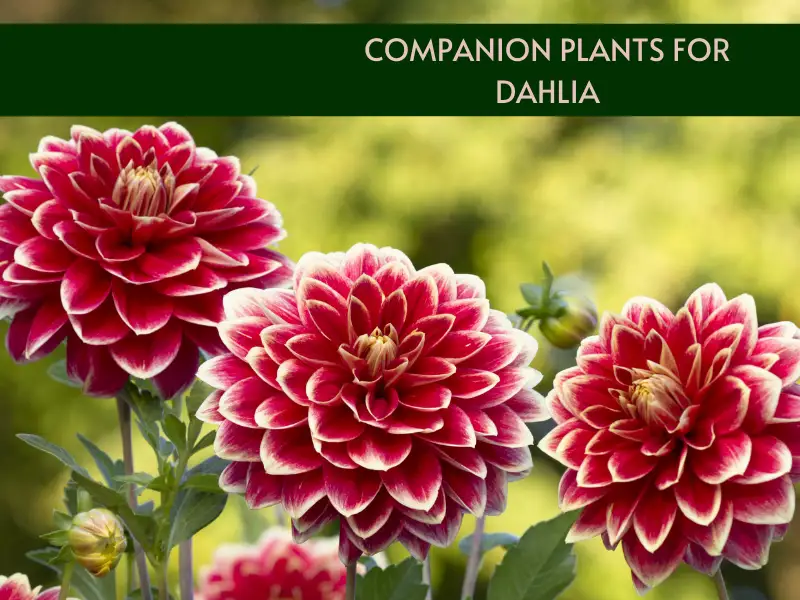
Pairing zinnias with dahlias offers both aesthetical and functional benefits. Both have attractive flowers that add to the garden’s beauty while also attracting pollinators and beneficial insects. The double blooms on dahlias perfectly balance out the single blooms on zinnias.
Note: Zinnias are susceptible to fungal diseases like Fusarium and powdery mildew. Meanwhile, dahlia has anti-fungal properties and can protect zinnias from fungal infestation.
Genariums
Genariums secrete various oils that have anti-fungal properties and will protect zinnia plants from fungal diseases like Fusarium and powdery mildew.
Additionally, low-growing geranium varieties are great groundcover plants that prevent soil erosion and suppress weeds that might otherwise stop the growth of zinnias.
Finally, if you’re interested in beautiful flowers and wish to develop an aromatherapy garden, mix zinnia with geranium. The latter has not only vivid red-purple blossoms but also a pleasant fragrance that’s welcoming to the senses.
Salvia
If you prefer a long bloom season that lasts from spring up until the start of winter, pair zinnias with salvia, otherwise known as sage.
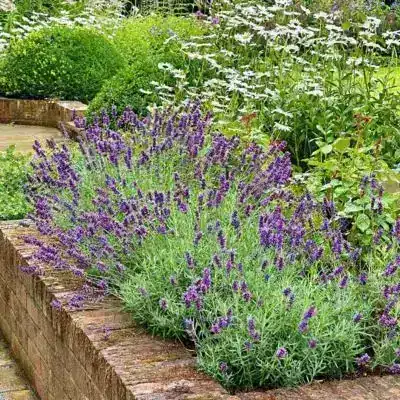
The zinnias will bloom from early summer until fall, and just as the blooms fade away in mid-late fall, the bell-shaped salvia blooms will take over, keeping your flower garden bright and colorful for a few months longer.
While zinnias attract insect pollinators, salvias attract hummingbirds, which are also effective pollinators.
The combination of different pollinating agents that these two plants attract into the garden leads to higher yields.
Note: Salvia also has a strong scent that repels common zinnia pests such as caterpillars, spider mites, and mealybugs.
Plants NOT to Pair with Zinnia
Not all garden plants pair well with zinnia. Plants that thrive only in full sun but are shorter than zinnia may show signs of stress due to partial shading by the taller zinnias.
Allelopathic plants and plants vulnerable to powdery mildew are also poor companions for zinnias.
Allelopathic plants release certain chemicals into the soil that can hinder growth and slow down blooming in zinnias. Examples of allelopathic garden plants to avoid pairing with zinnias include perennial rye, garlic mustard weed, and pine.
There are over 20 species of zinnia, with most of these being highly susceptible to powdery mildew. It’s, therefore, advisable to avoid pairing zinnia with other plants prone to powdery mildew infestation.
Such a pair will cause the fungal disease to spread quickly throughout your garden. Examples of garden plants prone to powdery mildew infestation include squash, melon, hydrangea, and roses.
Tips for companion planting with zinnia
Consider the following tips for successful zinnia companion planting:
- To minimize the risk of powdery mildew infestation, ensure the zinnias and the companion plants aren’t crammed too close together. Overcrowding causes high humidity levels, which increases the risk of fungal diseases like powdery mildew. Moisture on zinnia leaves also raises the risk of powdery mildew; thus, avoid overhead irrigation.
- Avoid overwatering zinnia or planting them in poor-draining soil that holds water for too long. Native to the dry grasslands, zinnias struggle when their roots are constantly damp. Do not pair zinnia with a plant that has high water requirements.
- The best time of the year to sow zinnia seeds is in the spring when the soil is warm, and the weather is sunny. Under optimal environmental conditions, zinnias germinate in about seven days and bloom within 2-3 months from planting.
- Avoid pairing zinnias with sun-loving plants that grow shorter than 2 feet, as this will result in shading. Alternatively, you can pair such plants with dwarf zinnia varieties that only grow to 6-12 inches. Note that you can pair zinnias with shorter plants that tolerate partial shade, as zinnias are single-stemmed and can only partially block sunlight.
- There are many ways to pair plants with zinnias. You can use it at borders and corners to beautifully demarcate the edge of your garden. You can also plant single zinnias sporadically amongst a sea of vegetables for a dash of color in your vegetable garden. Another option is to plant zinnias in containers and place the containers at specific spots in the flower garden as focal points.
Final thoughts
Zinnias are versatile flowering plants that pair well with marigolds, nasturtiums, salvia, geraniums, dahlia, and cosmos to attract pollinators. However, avoid planting zinnias near beans, tomatoes, potatoes, or other plants prone to mildew, as zinnias are susceptible and can spread the fungus.
FAQs
Yes, zinnias and peppers make great companion plants since they share similar growing conditions. Also, zinnias attract pollinators for better pepper yields. Avoid tall zinnia varieties that could shade the sun-loving peppers and stunt their growth.
Yes, zinnias pair well with vegetables like tomatoes, cucumbers, and squash. Their bright blooms attract pollinators for better yields. Remember, spacing is key to this kind of pairing to control potential pest and disease issues.
No, zinnias do not like being crowded as it can increase humidity and cause powdery mildew. Space zinnias 12-24 inches apart depending on the variety to allow air circulation and prevent fungal infections. I space the taller varieties at least 24 inches apart to reduce the risk of infections.
Yes, zinnias attract pollinators that improve zucchini yield. We recommend proper spacing of about 12-24 inches between these plants to prevent powdery mildew that both are prone to.


